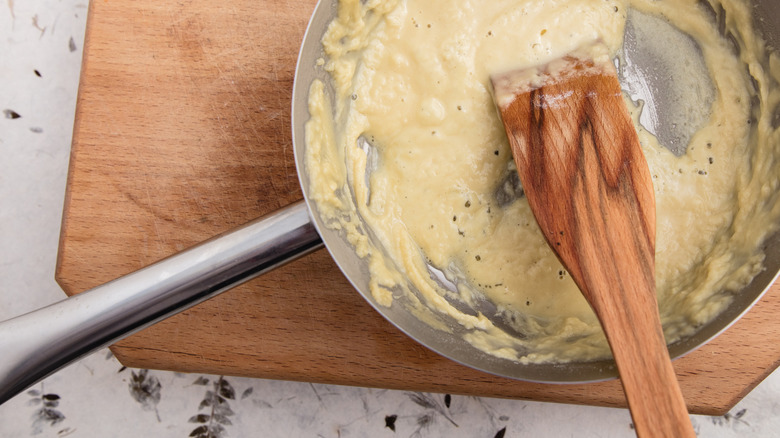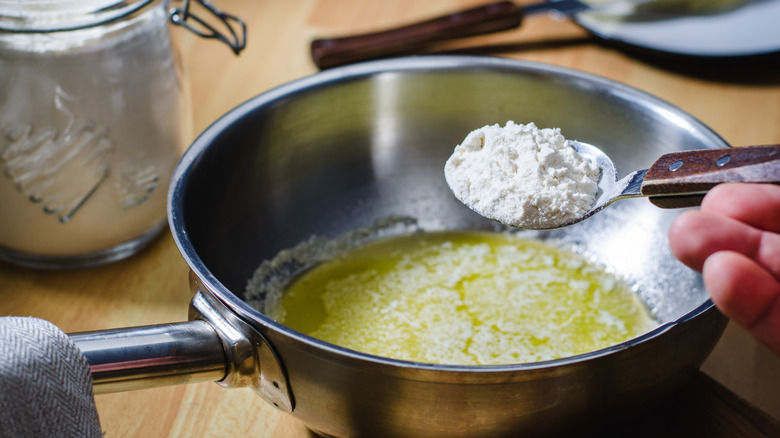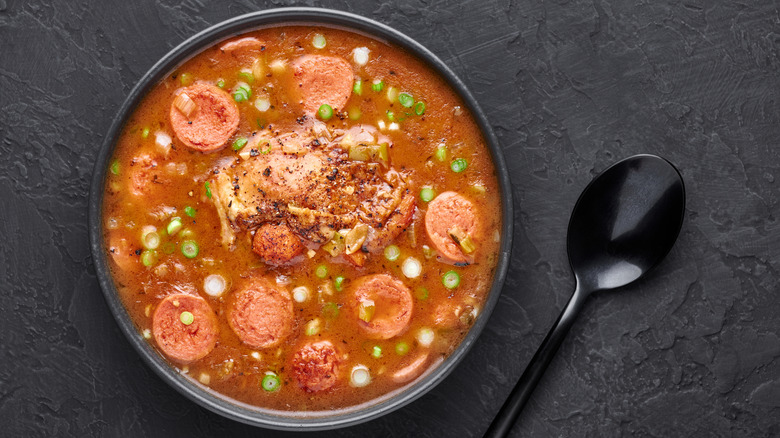There's One Effortless Method You Need To Try For Stir-Free Roux
If you mix equal parts starch and fat, heat the mixture on the stovetop, and keep stirring until it turns into a beautiful, deep brown and takes on a nutty aroma, you'll have cooked the indispensable thickening agent called roux. The glucose molecules in starch can thicken a soup or sauce, but if you just toss in a handful of flour, all you'll get is clumps. Even though its instructions fit into a single sentence, those three simple steps are more laborious than they might seem, and a roux is easy to mess up. It can burn, clump, or refuse to thicken — unless, of course, you use the oven.
The traditional method for how to make a roux involves a pan and the stovetop and constant stirring. The oven won't cut any time off your roux's cooking time; in fact, it will take more time. However, the oven roux method will let you walk away and only attend to it every half hour.
Set your oven instead of stirring
The first step is to choose your starch and fat. Generally, a roux starts with flour, but the fat can be a little variable. If you're cooking a roux on the lighter end, you can opt for butter. If you need a darker roux, choose a neutral, high-heat oil that will be able to stand up to the prolonged heat. Mix equal parts of the two ingredients together in an oven-safe skillet or Dutch oven until the concoction is nice and smooth.
After that, it all goes into an oven heated to 350 degrees Fahrenheit. Leave it in the oven for about 20–30 minutes, then take it out and stir it around. Continue this in 30-minute intervals. At each interval, the roux should be a darker brown — by the time you get to two to three hours, the roux will be a deep chocolate color. The slow cooking time helps avoid burning, so you'll just stop the clock when you have the color you're looking for.
Cook with all the colors of the roux
Roux comes in a wide range of colors, from white to dark, each with their own flavor and purpose. White roux is cooked only briefly, enough for the flour taste to disappear, and it typically appears in sauces like béchamel or in creamy chowders. Then, anywhere from 30 minutes to an hour and half in the oven later, your white roux will turn blonde. This golden-brown roux takes on a toasty flavor and is a great thickening addition for a variety of gravies, stews, and sauces. After another half hour or more, the color will deepen, and you'll have peanut butter or medium brown roux — the flavor is rich, but it won't thicken quite as efficiently as the lighter colors.
Finally, the dark brown roux will appear toward the end of the cooking process. Its color is a rich, deep brown, and it won't help all that much when it comes to viscosity. But, its flavor is bold enough to make up for the lack. It needs to be used in a dish that can stand up to that taste, so it's popular for gumbos and fricassees. In the oven, this color could take anywhere from two hours to three hours. Even given the time, the oven method turns roux from one of the hardest dishes to make from scratch into one of the easiest.



